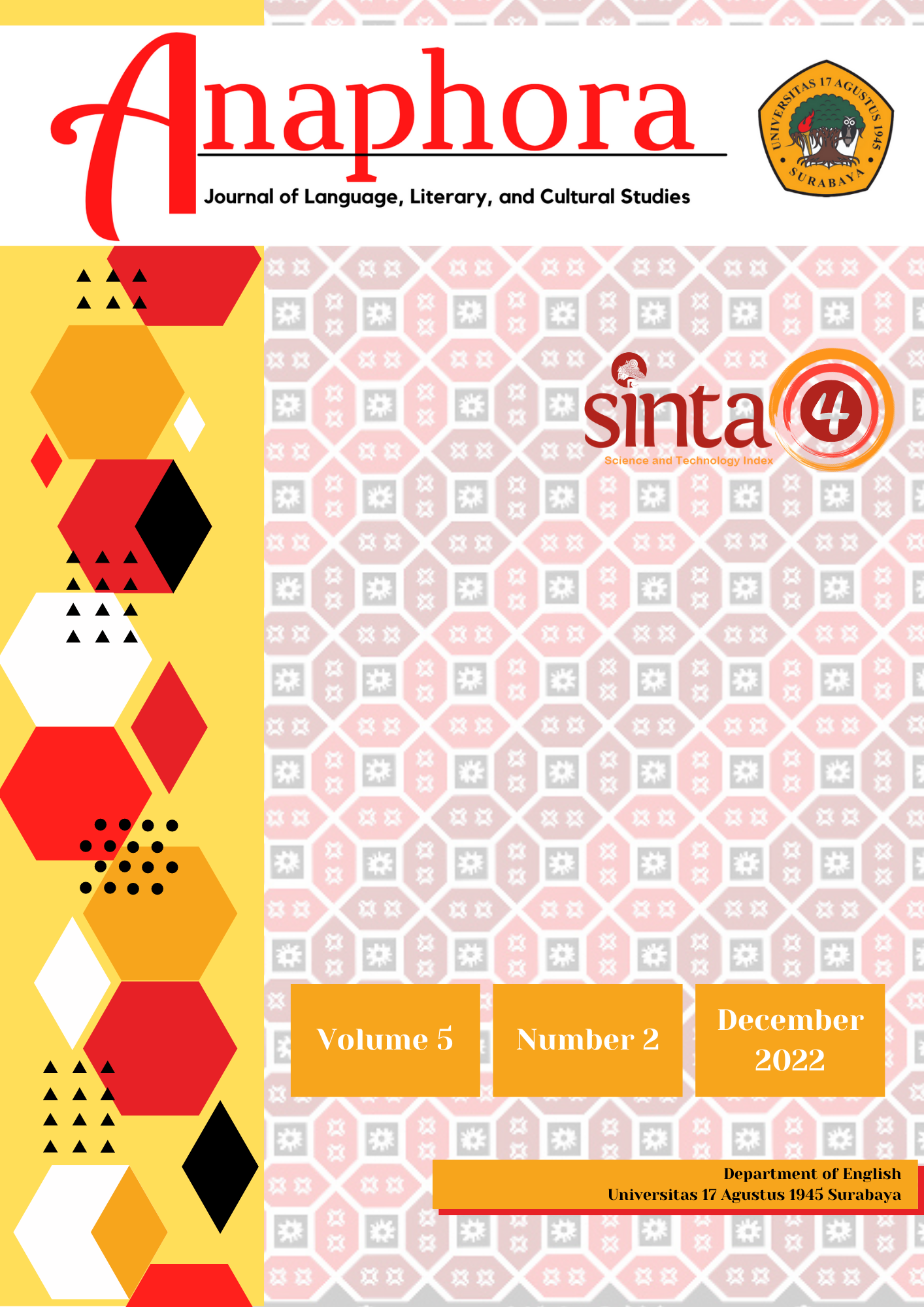English and Indonesian Singular Forms: A Case of Nouns
DOI:
https://doi.org/10.30996/anaphora.v5i2.6906Keywords:
countable nouns, non-countable nouns, singular formsAbstract
This study is aimed at finding out the similarities, dissimilarities, and possible learning difficulties faced by students learning English and Indonesian singular forms as well as its contribution to TEFL. The researchers used a qualitative research design. The documentation technique was used to collect the data. To analyze the data, the researchers used descriptive analysis. The results showed that there were four similarities and two dissimilarities between English and Indonesian singular forms. The four similarities were in indefinite article, definite article, quantitative adjective, and units of measurement. While the two dissimilarities were in the definite article and definite article. The possible learning difficulties faced by students learning English and Indonesian singular forms were that they were not very familiar with grammar rules and it made them perplexed and created mistakes when writing and speaking. The contribution was as teaching guidance that assists English teachers to create a better teaching Grammar design on singular forms in terms of countable and non-countable nouns.
Downloads
References
Crystal, D. (2008). A dictionary of Liguistics and phonetics, (6thed.). Malden: Blackwell Publishing.
Eastwood, J. (2002). Oxford guide to English grammar, (7thed.). New York, NY: Oxford University Press
Karam, A., Hamid, A., Ali, S.S., & Rahat, L. (2020). Problems in the acquisition of English nouns by undergraduate level learners: IIkogretim Online-Elementary Education Online 19 (3), 3678-3693.
Keshavarz, M.H. (2012). Contrastive analysis & error analysis, (4th ed.). Tehran: Rahnama Press.
Khansir, A.A., & Pakdel, F. (2019). Contrastive analysis hypothesis and second language learning: Journal of ELT Research 4 (1), 35-43.
Kridalaksana, H. (2008). Kamus linguistik, (4thed.). Jakarta: PT. Gramedia Pustaka Utama.
Mulyawan, I.W. (2014). Contrastive analysis of English and Indonesian noun articles: Leksika, Jurnal Bahasa, Sastra dan Pengajarannya 8 (1), 7-10.
Sneddon, J.N., Adelaar, A., Djenar, D.N., & Ewing, M.C. (2010). Indonesian Reference Grammar, (2nded.). Melbourne: A& U Academic.
Sukirmiyadi (2018). The role of contrastive analysis in translation study: International Journal on Studies in English Language and Literature 6 (9), 30-34.
Sulaiman, M., Syahri, I., & Saputri, K. (2022). A contrastive analysis between English and Indonesian copulative verbs: English Community Journal 6 (1), 36-45.
Sulaiman, M. (2020). A contrastive analysis between English and Indonesian negations: A case of negative markers: English Community Journal 4 (1), 33–44.
Sulaiman, M. (2018). A contrastive analysis between English and Indonesian pronominals: English Empower, Journal of Linguistics and Literature 3 (2), 82-91.
Sulaiman, M., & Yuliani, S. (2017). A contrastive analysis between British and American varieties: A case-study of English accents. Smart Journal 3 (2), 125-136.
Sulaiman, M. (2017). A contrastive analysis between English and Indonesian greetings. English Empower: Journal of Linguistics and Literature 2 (2), 101-109.
Syahri, I., Sulaiman, M., & Susanti, R. (2017). Metodologi penelitian pendidikan bahasa, (1sted.). Palembang. Roemah Sufie.
Tavakoli, H. (2012). A dictionary of research methodology and statistics in applied lingustics. Teheran: Rahnama Press.
Thyab, R.A. (2022). A contrastive analysis of relative clause grammar in both Arabic and English: Rimak International Journal of Humanities and Social Sciences 4 (1), 231-237.
Downloads
Published
How to Cite
Issue
Section
License
Authors whose manuscript is published will approve the following provisions:
-
The right to publication of all journal material published on the jurnal anaphora website is held by the editorial board with the author's knowledge (moral rights remain the property of the author).
-
The formal legal provisions for access to digital articles of this electronic journal are subject to the terms of the Creative Commons Attribution-ShareAlike (CC BY-SA) license, which means Jurnal Persona reserves the right to store, modify the format, administer in database, maintain and publish articles without requesting permission from the Author as long as it keeps the Author's name as the owner of Copyright.
-
Printed and electronic published manuscripts are open access for educational, research and library purposes. In addition to these objectives, the editorial board shall not be liable for violations of copyright law.















